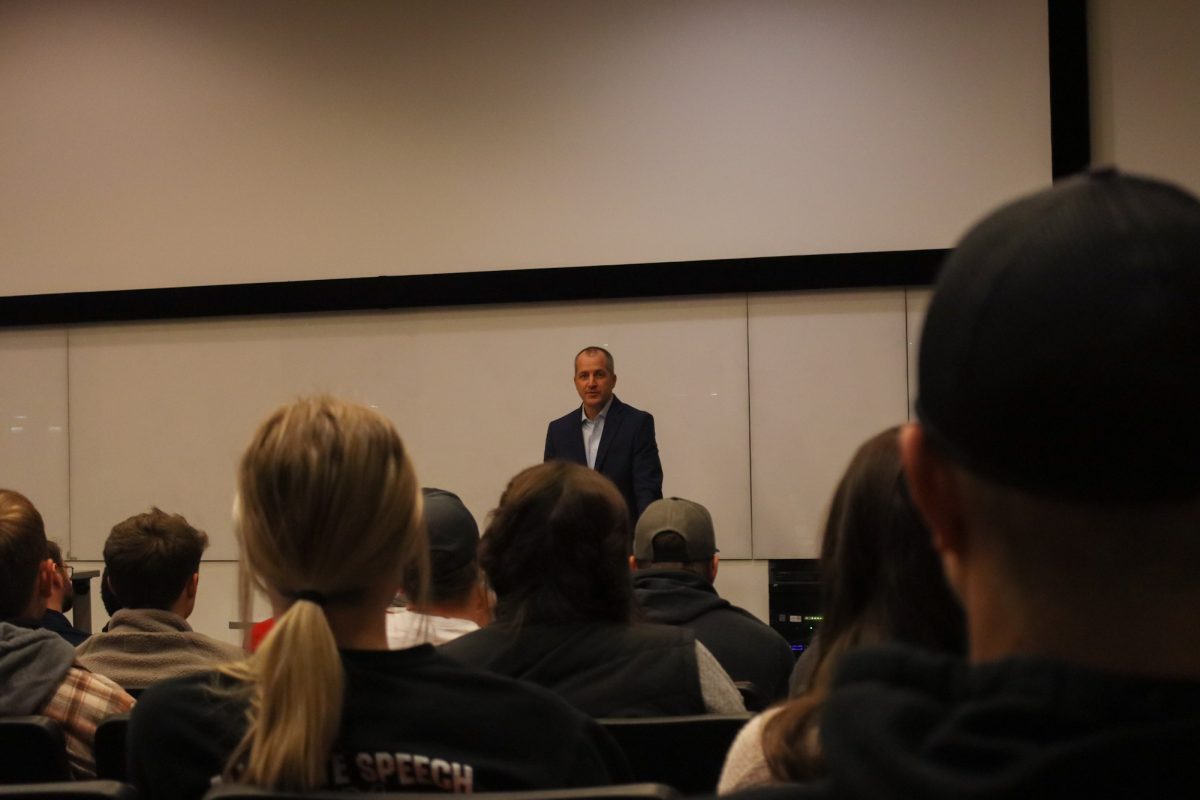College does secret atomic power work
November 4, 1996
The following is part of a continuing series of historical articles as they appeared in Iowa State’s student newspaper. This is the original article on Iowa State’s involvement in developing the first atomic bomb which appeared in the Wednesday, Aug. 8, 1945, issue of the Iowa State Daily Student. The first atomic bomb was dropped on Hiroshima, Japan, on Aug. 6, 1945. The second was dropped on Nagasaki on Aug. 9.
Scientists of Iowa State, working day and night for many months, have played a tremendous part in the development of the most destructive weapon known to man, the atomic bomb, states Dr. Frank H. Spedding, on leave from the Department of Chemistry, project director of the work done here on the perfection of methods for utilizing atomic power.
Since February of 1942, scientists of Iowa State and other schools throughout the country have worked with but one thought in mind, the perfection of the atomic bomb before our enemies achieved it.
The work done at Iowa State was divided into two parts, work in pure science in the development of procedures for the production of strategic materials to the stage where they could be turned over to industry for large scale production. According to Spedding, the work done here has saved the government millions of dollars and speeded up the success of the project by months.
Millions Spent Here
Millions of dollars were spent on the project here, and many of the best scientists of the country including Iowa State staff members, worked on it in various capacities. Spedding was assisted by Dr. Harley Wilhelm and Dr. I. B. Johns, both on leave from the Department of Chemistry. Consultants for the project were Dr. Harvey Diehl and J.A. Wilkinson, both of the Department of Chemistry. Of eight section chiefs on the project, four were Iowa State men. They were Dr. A. A. Daane, Dr. C. F. Gray, Dr. R. E. Rundle and Dr. James Warf. The excellent co-operation and ability of all people involved to keep the project a secret cannot be praised too highly, Spedding said.
Many vague and fantastic stories have come to light since the release of the story of the atomic bomb. The possibility of the world’s blowing up is sheer nonsense, states Spedding, but it may be possible to destroy entire cities and perhaps, in the future, entire countries. Peacetime applications of this new discovery far outweigh the wartime possibilities, he says. In 20 years or less one may see entire towns heated by atomic power, with even the streets kept free from snow in winter by the use of steam pipes atomically powered under the streets.
The tremendous efforts used in the development of atomic power has pushed science ahead 50 or 60 years. Medical science also will be advanced, announces Spedding, by the use of by-products of this new discovery.
At the present time there are nearly 67,000 persons working on the production of the bomb in this country. The mass production of the bomb is being carried out in undisclosed plants in the western United States. One-third of the men employed on the project here actually are in the army, but have been doing their work in civilian clothes.
Tests on the bomb have been going on for many months. At one time there was a doubt of the project’s success, but during the last year scientists had been fairly confident.
No Danger of Explosion
“At no time was the city of Ames or the surrounding territory in any danger of being blown off the earth,” Spedding states, “although there was personal danger to the men working on the project.”
Work on the project will continue here, but at this time no information can be given on the actual construction or ingredients of the bomb, he declares. All that has being announced is that uranium ore is involved in the making of the bomb.
The actual explosion of the bomb is caused by the disintegration of an atom into two atoms with neutrons. The neutrons set off other atoms, with this process continuing up to unbelievable numbers. The atomic bomb is dropped with a parachute to enable the plane carrying the bomb to escape the force of the bomb explosion. The weight of the bomb cannot be told at this time, but it is known that the bomb is much smaller than the British “block-buster” bomb.
The discovery of the atomic bomb and further inventions resulting from this discovery may mean an era of permanent peace, says Spedding. If each nation has some knowledge of the bomb, this knowledge should convince these nations of the utter impossibility of any profits in future wars.






